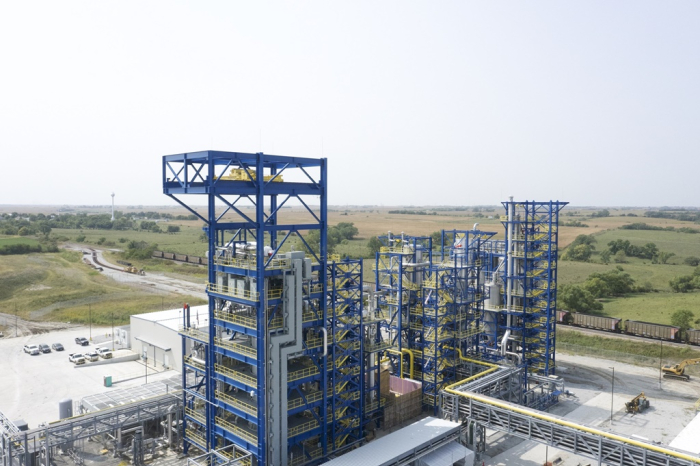

To dominate domestic market’s growing demand for eco-friendly industrial materials
SK Inc., the holding and investment company of South Korea’s SK Group, agreed to establish a ‘turquoise’ hydrogen joint venture in the country with Monolith Materials Inc. in a move to expand its hydrogen business portfolio.
Monolith is the world’s first mass-producer of turquoise hydrogen, the unique production method of which can be positioned between green hydrogen made 100% from water hydrolysis and blue hydrogen made through carbon-based processes. SK plans to actively utilize turquoise hydrogen in the period of transition from blue hydrogen to green hydrogen.
SK CEO Jang Dong-hyun and Monolith CEO Rob Hanson signed a memorandum of understanding for the partnership on Oct. 13. The two companies were set to ink a formal contract for the JV as early as next year.
“We plan to develop turquoise hydrogen into an axis of SK hydrogen production through close cooperation,” Jang said.
Through the JV, SK aims to dominate South Korea’s market of increasing demand for eco-friendly industrial materials such as turquoise hydrogen and solid carbon.
TO EXPAND HYDROGEN BUSINESS PORTFOLIO
SK expects to escalate its hydrogen business capabilities and portfolio by adding turquoise hydrogen to its hydrogen value chain.
Established in 2012, Monolith has technologies that convert natural gas into hydrogen and a solid carbon byproduct to produce turquoise hydrogen.

The types of hydrogen produced industrially are largely divided into grey, blue and green, although hydrogen itself is colorless.
The grey hydrogen emits the most greenhouse gases, as it is produced as a byproduct during petrochemical manufacturing processes. The blue hydrogen also uses fossil fuels such as natural gas to produce hydrogen but emits no greenhouse gases after having gone through the stages of carbon capture, utilization and storage (CCUS). The green hydrogen is made by using renewable energy sources.
Monolith’s method, while essentially a blue hydrogen production process as it uses a type of fossil fuel as the base material, is “greener” than blue as it does not use the typical CCUS process. Its turquoise hydrogen is categorized as eco-friendly clean hydrogen that does not generate carbon dioxide during production.
In June, SK bought a minority stake in the Nebraska-based Monolith and secured a board position of the company.
Separately, the two companies plan to jointly research how to use solid carbon as anode materials for secondary batteries. Monolith produces eco-friendly solid carbon that can be processed into carbon black, a key raw material for tires, coke for steelmaking and artificial graphite for electric vehicle batteries in the process of turquoise hydrogen production.












